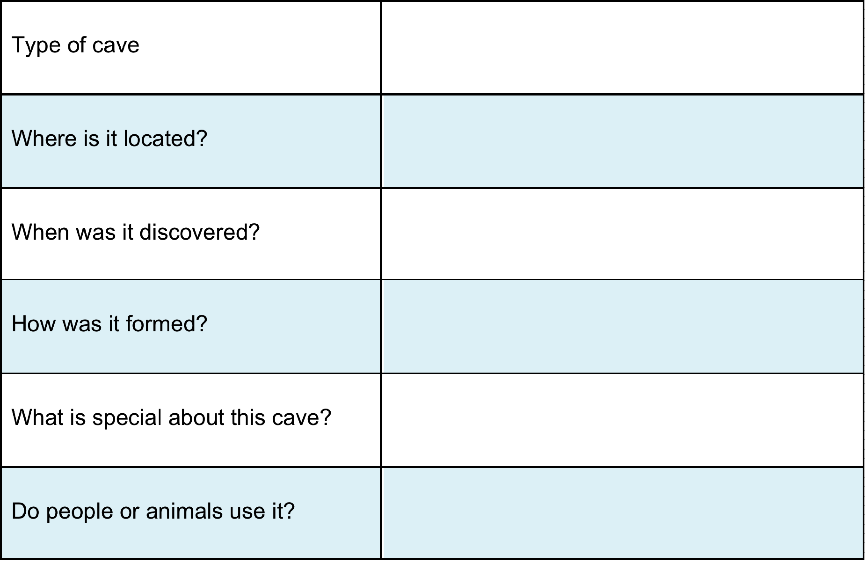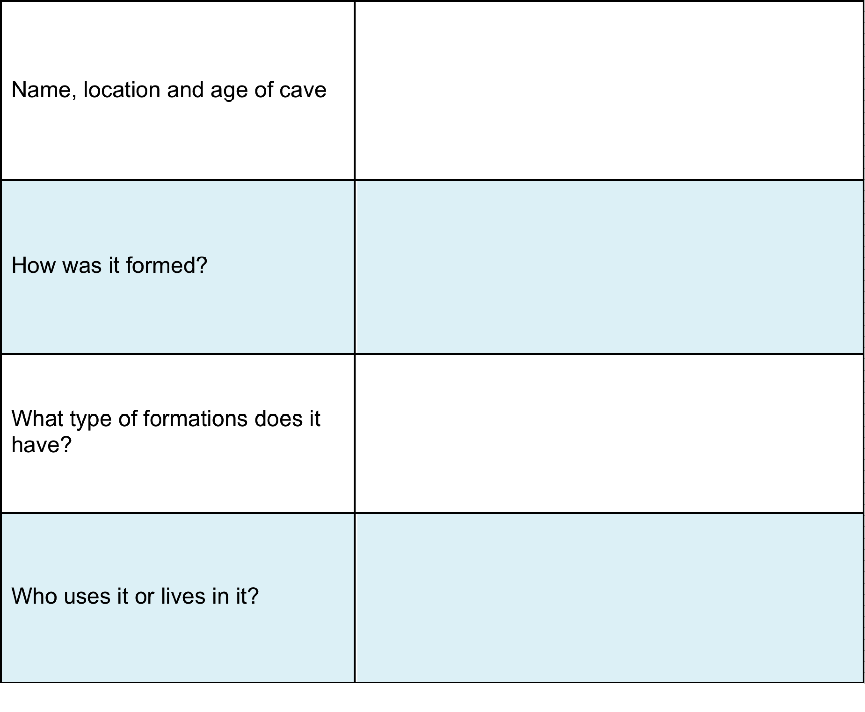Information for Teachers
Curriculum links
Australian Science Standards
ESS (ACSSU075) Earth’s surface changes over time as a result of natural process and human activity
ESS (ACSSU075) Rocks and fossils show evidence of changes in Earth’s surface features
ESS (ACSSU075) Natural processes create changed or different landforms
GS (ACHASSK113) The environmental and human influences on the location and characteristics of a place and the management of spaces within them
New Zealand Science Achievement Objectives
PEB: Water, air, rocks and soil, and life forms make up our planet and these are also Earth’s resources
PEB: The nature of the water cycle and its effect on climate, landforms, and life
MW: Chemical and physical changes in materials or substances
NS: Science is a way of explaining the world and that science knowledge changes over time
Helpful websites
You may want to direct your students to some or all of these websites to help with their investigations.
General information about caves can be found at:
https://kidsgeo.com/geology-for-kids/caves/
http://www.sciencekids.co.nz/sciencefacts/earth/caves.html
Information about different types of caves can be found by searching using the subheadings from chapter 1 of Exploring Caves, e.g. limestone caves.
http://www.kidcyber.com.au/limestone-and-limestone-caves/
To find out about fossils in caves, helpful search words include: paleontology, fossils.
This site has lots of interesting information about caves. Enter “cave” in its search engine or go to archaeology or paleontology.
https://www.amnh.org/explore/ology
Students can search “animals that live in caves” to find out more about how and why animals live in or visit caves.
This site has a nice quiz about animals that live in caves in Cuba:
https://www.amnh.org/explore/ology/biodiversity/cuban-wildlife-matching-game/caves-of-cuba
How to search the internet
1 Keep your request short
Fewer words will give a more accurate search.
2 Choose exactly what you want
For example: Arctic Circle Climate
3 Use quotes
Double quotes around a set of words tell the search engine to consider those exact words in that exact order without any change. For example: “Arctic Circle Climate”
4 Use the plus sign (+)
If you add a plus sign (+) between words, the internet will search for all the words. For example: migrate+birds+whales+mammal
5 Use the minus sign (–) to say what you don’t want
Use a minus sign (–) to show words you do not want to appear in your results. For example: if you search for burrowing animals and do not want mammals in your search, –mammals will exclude mammals. Note that you need to put a space before the minus sign for the word to be excluded.
6 Be very clear about what you don’t want
Part 1
Ask questions and make predictions
After reading Exploring Caves, you may have many questions about how caves are formed and how people and animals use caves.
List your questions
- Compare your list with questions that others have.
- Choose a question you would like to investigate.
- You can work alone, with a partner, or in a small group.
You may choose to investigate a cave or cave system you have heard of
Consider:
1. Where is this cave found?
2. When was it discovered?
3. How was it formed?
4. What is of special interest about this cave?
5. How have people or animals used the cave?
Go to Part 2 Plan and investigate →Part 2
Plan and investigate
Do searches in the internet or in books or talk to people who can help to find the information you are looking for.
Your teacher may suggest suitable websites for further information.
Go to Part 3 Record and analyse data →Part 3
Record and analyse data
Find a way of recording your information that will allow you to see any patterns in the data.
Data Chart for caves
 Download Chart
Download Chart
Go to Part 4 Evaluate the information →
Part 4
Evaluate the information
1. Look over the information you have gathered and the patterns you have found.
What is of special interest about this cave?
How have people or animals used the cave?
2. Search for other patterns.
3. Makes notes about what you find.
Go to Part 5 Communicate and share ideas →Part 5
Communicate and share ideas
Look over all of the information that you have gathered in your investigation.
What are the most important ideas about your topic?
Make a chart showing the most important ideas.
 Download Chart
Download Chart
← Return to menu
